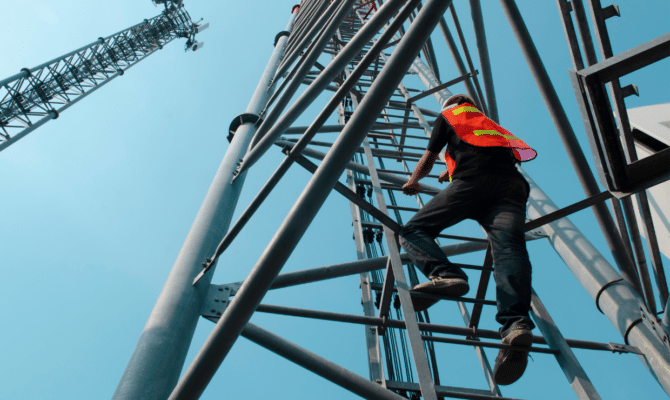Investing in the telecoms sector
In February 2020, Key invested in Commhoist Limited, a leading player in the end to end mobile telecoms logistics market.

Commhoist was our second investment in this exciting, innovative sector following our previous investment and subsequent sale of WHP Telecoms Limited. We are confident, given the ever-changing technology and the opportunities that this presents, that it will not be our last. There are a number of developments in the market that will create opportunities for growth, the two high profile drivers impacting this sector right now are the 5G roll-out and plan to remove Huawei equipment from the network. Read more about these issues and our view on how it will affect the SME market below.
5G roll-out
The UK is at the beginning of a significant program of investment in the current mobile infrastructure both in terms of 5G roll out and investment and upgrade of the rural 4G network. 5G is the next generation of wireless technology, following on from 2G, 3G and the 4G that most of us use today. It is forecast to be significantly faster than current networks, will offer greater capacity and therefore allowing more smart devices to connect to the network.
Our mobile phones are the first devices that are beginning to benefit from the rollout of 5G by bringing us faster connectivity. But 5G is about much more than just being able to download films or scroll through social media at a quicker pace, and is expected to revolutionise a number of industries ranging from healthcare to manufacturing, as well as unlock a number of technologies such as artificial intelligence and machine learning.
The UK government has said 5G could deliver ‘significant economic benefits from the digital transformation of many sectors’. The current UK government put 5G high on their list of priorities in the last general election and said it was aiming to have the majority of the population connected to 5G by 2027. 5G is being rolled out in tandem with superfast full-fibre broadband, which allows drastically faster broadband connections than traditional copper lines.
The two complement one another and full-fibre broadband is at a more advanced stage of being introduced, partly because it is needed for a 5G network to be effective. The UK government is aiming to have 15 million premises connected to full-fibre by 2025 and for nationwide coverage by 2033.
The UK mobile market and therefore 5G roll out is controlled by four mobile network providers, BT, Vodafone, O2 and Three. These four companies own and manage the majority of the UK’s mobile communication infrastructure and will have to invest significant sums to introduce 5G across the country. The government has said the ‘mobile network operators will be central to 5G’s successful delivery’.
BT Group owns the UK’s national broadband network, Openreach, and therefore has the additional responsibility of introducing faster broadband, competing against Sky, Virgin Media, TalkTalk and a number of other smaller providers.
These companies are having to invest heavily to install the equipment needed for these technologies to work. For example, faster broadband entails replacing copper wires with fibre optic cables that can transfer data quicker, while 5G needs a lot more infrastructure than 4G because it needs to run on higher radio frequency bands to deliver faster speeds.
According to Deloitte, there will need to be three to ten times as many sites and masts to run 5G compared to the existing 4G network. Companies are expected to invest huge sums into these networks, with payback estimated several years into the future.
UK bans Huawei from 5G network
As widely reported in the press, the UK government has announced a series of measures to remove the Chinese phone-maker Huawei from the UK’s 5G mobile networks. Huawei is by far the largest provider of 5G equipment in the country (and the world). The ban will prevent UK mobile providers from buying new Huawei 5G equipment after the end of this year as well as having to remove all of the existing Huawei 5G kit from their networks by 2027.
How much will 5G and full-fibre cost to implement in the UK?
The UK government has said it will cost around £30 billion for the full roll-out of full-fibre broadband, while the cost of 5G will be lower thanks to the fact it is building on top of the existing network. A government review in 2018 said deploying an extra 200,000 sites, enough to provide 5G coverage in ‘most urban areas’, would be around £3 billion, and said it expected mobile network operators to collectively spend about £1 billion per year on 5G infrastructure. The impact of the Huawei ban will only delay the introduction of 5G and add to the costs. The UK government admitted that replacing all existing Huawei equipment would cost up to £2 billion alone and could delay the full introduction of 5G by up to two years.
The impact on SME telecoms businesses
We expect the level of activity linked to both the 5G rollout and the Huawei swap-out will drive significant growth in the market over the next 10 years and beyond. Technology and consumer demand is relentless, driving an increasing need for greater speed and capacity as the thirst for more and more data continues. Whilst the industry and the players within it will change, the opportunities for innovative businesses to take market share and differentiate themselves is clear. This, combined with a market which is likely to consolidate over the next few years represents an attractive market for private equity investment over the long term.